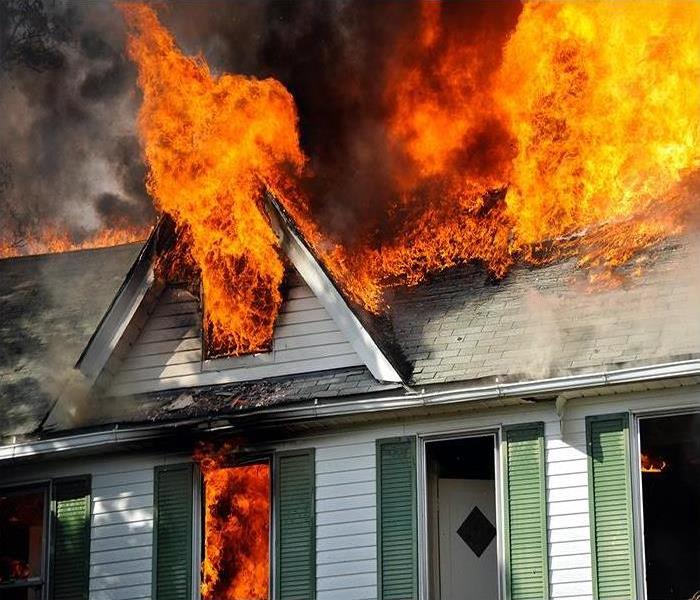Where Do House Fires Usually Start?
10/10/2019 (Permalink)
 A devastating house fire can be prevented by paying attention to safety at 5 key areas in your home.
A devastating house fire can be prevented by paying attention to safety at 5 key areas in your home.
Every year, 350,000 American families experience a house fire. While a fire can start almost anywhere in your home, some areas catch fire much more often than others. Fires start for many reasons—faulty electrical wiring, overheated appliances, unattended candles and fireplaces—but you can take simple precautions at these five locations to help prevent a fire at your home.
Kitchen
Half of all residential fires start in the kitchen, with its many appliances that use heat and electricity. Never leave food cooking on a stovetop unattended. Keep fabric and material, like potholders or dishcloths, away from heat and flame. Don’t let grease and residue build up on your oven or stovetop.
Appliances
Your electric, gas or heat-generating appliances are potential fire hazards, and appliances 15 years or older are particularly prone to fire damage. Only run appliances when you’re home, and regularly clean, inspect and maintain all your appliances.
Dryers: Keep vents and filters clean by removing lint after each use, and at least once a year, clean the lint from the exhaust hose at the back of the dryer.
Dishwashers: Don’t run these unattended—dishwasher heating elements, especially in older models, can overheat and catch fire.
Microwaves: Don’t heat materials that are flammable, such as aluminum foil, Styrofoam or certain plastic containers.
Toasters/Toaster Ovens: Never use these appliances unattended. Clean your toaster or oven regularly, because crumbs can accumulate and become stuck at the bottom, creating a fire hazard. Be aware that the electrical elements inside an older toaster can become faulty and may not turn off, which could start a fire.
Bedroom
Bedrooms are filled with potential fire hazards: bedding, mattresses, curtains and plush items. If your mattress was made before 2007, when flame-retardant safety standards were put into place, think about replacing it. Install smoke alarms in each bedroom and make a fire escape plan that includes two ways to exit the room (usually through the door and a window).
Chimneys and Fireplaces
As they age, chimneys and fireplaces can develop structural problems, leading them to burn too hot. Chimney liners can loosen or detach, allowing burning embers and ash to travel to walls, attics and roofs. Regularly clean and maintain your chimneys and fireplaces. At least once per year (or when creosote or soot builds up to a quarter inch), have a professional inspect and clean them. Keep rugs and other fabrics away from the fireplace, and always place a screen in front of the fireplace.
Living Room
Like bedrooms, living rooms contain many potentially flammable items: electronics, curtains and furniture. If you burn candles, place them away from combustible objects and materials and never leave a burning candle unattended.
If your home or business suffers damage from a fire, call SERVPRO of West Hartford today at 860.206.6141
We’re Here for You
The team at SERVPRO of West Hartford has specialized training and experience in fire restoration and cleanup, as well as natural disaster and storm damage cleanup, water damage and mold remediation, and chemical and biohazard cleanup. Call SERVPRO of West Hartford (860.206.6141) any time.
SERVPRO of West Hartford
100 Peters Road, Bloomfield, CT 06002
IICRC Certified
Noemi Garcia
Certified SERVPRO technicians
Call 860.206.6141
24-hour emergency service
If your home or business suffers damage from a fire, call SERVPRO of West Hartford today at 860.206.6141






 24/7 Emergency Service
24/7 Emergency Service